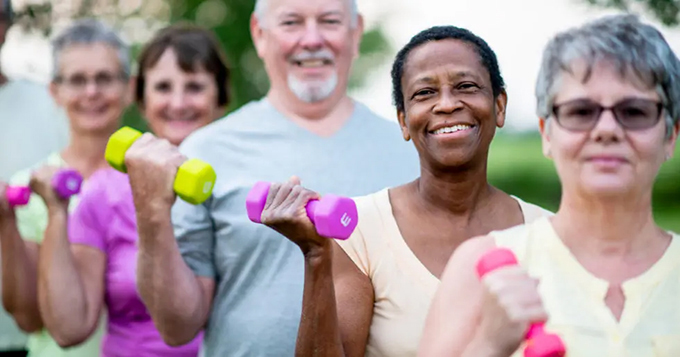
“If we could give each individual the right amount of exercise, neither too little nor too much, we would have found the surest path to health.”
This phrase is attributed to Hippocrates , considered the father of medicine in the Western world. His reflection makes us understand the importance that physical exercise has always had for human beings.
In health and disease
And exercise has always been there. We have known for a long time that people who do it regularly enjoy good health. Also, these active individuals get sick less, and if they do get sick, they recover sooner. However, it is only in recent decades that we have begun to truly understand its power.
Previously, the fact of suffering from a pathology was a reason to exclude exercise. Rest was the general rule. We now know that a patient not only can, but must get moving to have a better and faster recovery. This has broken all the molds.
We have evidence of the effectiveness of physical exercise as a treatment for more than 25 different ailments : cardiovascular, metabolic, pulmonary, neurological, psychiatric, and even different types of cancer .
This opens up many possibilities, since we are talking about a cheap, easy-to-use and very effective tool. With it we can improve the prognosis of most diseases.
The power of muscles
Furthermore, we have begun to understand from a scientific perspective the reason for its effectiveness. Muscle is not only the engine of our movements: it is a complex organ with regulatory and metabolic functions.
In fact, it is such an important player in the regulation of the endocrine system that it has its own hormones: myokines . These hormones have a widespread effect on the body, from the endocrine system to the immune system , including the brain .
Palpable benefits
There are widespread diseases, such as type II diabetes and hypertension, in which the benefits of physical activity are especially tangible. In these people, exercise improves endothelial and vascular function , reduces blood pressure and triglycerides , and improves risk factors for cardiovascular disease .
In other pathologies, such virtues are not so evident, although the weight of evidence is increasing. A good example of this is the treatments for different types of cancer. It has been observed that patients who exercise during chemotherapy have reduced fatigue and maintain better function of their immune system .
People on dialysis can also benefit from a physical exercise program appropriate to their circumstances. Exercise should be seen as a fundamental part of the treatment, as an adjuvant to pharmacological therapy and dialysis.
Three ways to move to maintain health
When we talk about physical exercise, we tend to put everything in the same box. However, the types of activities that we can include in our daily lives and that will bring us health benefits can be divided into these categories:
- Sport. Basketball, judo, tennis, athletics… Sport is not only a fantastic form of active leisure, but it will also help us stay in shape and take care of our health. It is important to keep in mind that if we have never practiced it and want to start, we may need physical conditioning first to avoid injuries and discomfort.
In general, regular practice of any sporting discipline will be good for our health. It has been shown that just starting to move already reduces mortality . The important thing is consistency and that we enjoy it.
- Physical activity. It encompasses all the movement we carry out throughout the day, without a specific objective. It is the result of travel or domestic tasks or similar.
The great paradigm is walking. Accumulating daily steps is an excellent way to reduce mortality from all causes . As a goal, we should set ourselves between 5,000 and 10,000 steps a day, getting as close as possible to 10,000 .
- Physical exercise. It refers to that activity that is organized to achieve a specific biological adaptation and improve physical condition. Both strength training and aerobic exercise have been shown to be good for your health. In fact, both can be combined to maximize their positive effects.
As a general rule, sick people who exercise get less tired, tolerate treatment better and for longer, and have a greater ability to fight the disease. Practicing it improves the effectiveness of pharmacological therapies and attenuates side effects, even in aggressive treatments. Arguably the real magic health pill .
It is the maxim that should reach the entire population: we must always do physical exercise, adapted to our circumstances and personal situation, but always. Even when sick.
Author Bio: Javier Prieto Troncoso is a University of Vigo Researcher in Endocrinology and Exercise Physiology. Member of the Galicia Sur Health Research Institute
